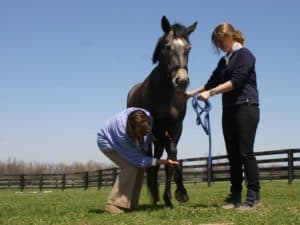Equine Vaccinations Essential During Peak Mosquito Season
This year’s wet spring weather provided optimal conditions for mosquito breeding and, thus, a large population of mosquitoes. Late summer coincides with peak mosquito season, which brings an increased risk of mosquito-borne diseases such as West Nile virus (WNV) and Eastern equine encephalitis (EEE) for humans, but also for horses.
“Owners are encouraged to talk to their veterinarian about having their horses vaccinated against these viruses,” said Delaware State Veterinarian Heather Hirst, DVM, MS. “It may take several weeks for a horse’s immune system to mount a response to the disease after the vaccine is given so owners should have their horses vaccinated as soon as possible.”
Both WNV and EEE are maintained in a cycle between mosquitoes and wild birds. Mosquitoes that feed on the infected wild birds might then bite humans or horses, infecting them with the viruses. Neither WNV nor EEE can be transmitted between horses or from horses to people.
Last week, the Delaware Division of Public Health Laboratory reported this year’s first finding of WNV in blood samples taken from the Delaware Department of Natural Resources and Environmental Control’s (DNREC) sentinel chickens that are monitored for mosquito-borne diseases. The samples are collected as part of a statewide surveillance program conducted by DNREC’s Mosquito Control Section
Create a free account with TheHorse.com to view this content.
TheHorse.com is home to thousands of free articles about horse health care. In order to access some of our exclusive free content, you must be signed into TheHorse.com.
Start your free account today!
Already have an account?
and continue reading.
Written by:
Edited Press Release
Related Articles
Stay on top of the most recent Horse Health news with












